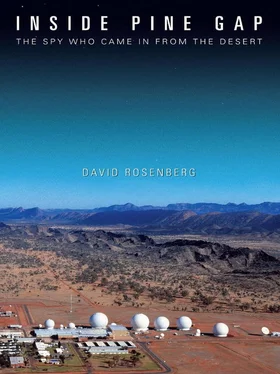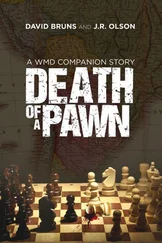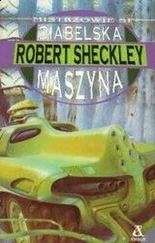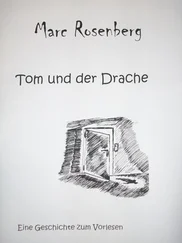In addition to general intelligence-gathering functions, Pine Gap also played a role in support of military operations; so, as this book is primarily ‘Pine Gap-centric’, rather than discuss the conflicts in detail, I emphasise the role the facility played in the various conflicts, including the first and second Iraq wars, the Balkan conflicts of the 1990s, and Afghanistan. There are numerous publications detailing operational campaigns that occurred during these conflicts, but the role of Pine Gap in each has not been previously revealed.
In writing this book, I have not invented any characters, locations or operational scenarios, although some stories required the omission of the names of actual people, or the substitution of fictitious names, and this is indicated explicitly for the reader. I have also avoided technical jargon and mathematical concepts, and have referenced other publications where appropriate, including Professor Desmond Ball’s highly technical work Pine Gap . [6] ibid.
So when I refer to Pine Gap ‘controlling a small number of US geostationary signals intelligence satellites’ and the ability of Pine Gap ‘to collect a wide range of foreign signals, including telemetry associated with Soviet strategic missile tests, radar emissions, and telecommunications…’ [7] ibid., p. xiii.
I urge the reader to see the applicable endnote and any other open sources for additional technical information.
Perhaps the function of the Base is best expressed in the words of Victor Marchetti, former CIA employee and author of The CIA and the Cult of Intelligence , when he writes that Pine Gap satellites are capable of ‘“sucking up like a vacuum cleaner” a wide spectrum of telemetry signals, military, diplomatic and other communications and radar emissions and beaming them back down to the ground control station at Pine Gap’. [8] ‘Electronic Vacuum Cleaner in the Sky’, Sun (Sydney), 4 May 1977, p. 45; and ‘CIA Involvement in Australian Affairs’, Four Corners , ABC Television, 17 May 1977, transcript, p. 4.
I have often been asked why Alice Springs was chosen as the location to control the satellites. Open-source documentation states:
To minimize the satellite’s weight, its size, and its power requirements, encryption systems were never installed. Thus it was essential to keep the Soviets as far away from Rhyolite’s downlink as possible. If a SIGINT trawler, such as those off Guam and Cape Canaveral, or a listening post, like the one in Cuba or one within an embassy, were able to tap into the beam, the USSR would discover how NSA was eavesdropping and would take countermeasures… The reason they put it in Alice Springs was because they didn’t want the Russians to know what the satellite was sending down. By placing it in Alice Springs, the ‘footprint’ [of the signal] was small enough so that you couldn’t eavesdrop on it outside Australia. They didn’t want the Russians hearing it from their trawlers. Once completed, the NSA base at Alice Springs was named Pine Gap. [9] Bamford, Body of Secrets , Chapter 10.
My time in Operations, from 5 October 1990 to 5 October 2008, spanned a tumultuous period in history that covered the terms of three American presidents, four Australian prime ministers, two wars in Iraq, a formal end to the Cold War, a peace treaty between Israel and Jordan, genocide in Rwanda, war in the Balkans and a tragic peacekeeping mission in Somalia. It was also a time that saw the destruction of the World Trade Center buildings in New York and the terrorist attack on the Pentagon in Virginia, the subsequent so-called ‘war on terror’, and the emergence of a new nuclear-armed nation, North Korea.
During this period I held a United States Government Top Secret Sensitive Compartmented Intelligence (TS-SCI) security clearance. [10] http://en.wikipedia.org/wiki/Security_clearance#Compartmented_Information
This is the highest level of clearance granted by the United States Government and is indicative of the amount of trust bestowed upon me. Holding this clearance allowed me to work closely with some of the most brilliant minds within the intelligence community and enabled me to use the most sophisticated equipment and computer programs to produce and report intelligence required by the American and Australian leadership and policymakers. The security clearance also gave me the authority to access highly secret reports and documents within the United States Government and allowed me insight into Iraq’s ‘Weapons of Mass Destruction’ (WMD) program and intelligence concerns of weapons proliferation around the world, particularly weapons development and testing. I’m proud to say that the Operations team I worked with was instrumental in saving the lives of Americans and Australians engaged in military operations, which has been acknowledged by the leadership of both countries.
Part of my aim in writing this book has been to reveal the extraordinary partnership that exists at Pine Gap between the governments of Australia and the United States. Our similarities, kinship and genuine affection for our respective cultures have resulted in an unbreakable bond. Australians and Americans may not agree on every issue, but if one country is threatened, I believe the other will always stand alongside, brothers-in-arms. While many Australians have historically resisted the presence of Pine Gap and the Americans who work there, I hope this book can change some viewpoints as to why this relationship is not only necessary but also beneficial to the security of Australia.
I am privileged to have worked with many talented Australian and American men and women, soldiers and civilians. It has been an honour to remain quietly in the background, working to protect our soldiers while they served in some of the world’s most dangerous places.

PART I:
GETTING IN

NSA headquarters, Ft Meade, Maryland
Like most American children growing up in the 1960s, television was a significant part of my life. Thanks to popular shows such as Mission: Impossible , in which mysterious government agents used hi-tech devices to eavesdrop on America’s enemies and thwart their activities, television helped glamorise security agencies and fostered a real sense of patriotism. To me, there was something irresistible about these eavesdropping government agents and the work they did to catch the ‘bad guys’.
At school in North Miami, Florida, my favourite subject was mathematics, and I enjoyed learning about electronics and building various radios from the do-it-yourself kits available in hobby shops. After graduating from high school I wasn’t sure which career path to take, but was technically oriented so I decided to enrol in electrical engineering at the University of Florida in Gainesville where I was accepted into the winter class in January 1981.
I graduated three years later with a Bachelor of Science degree but decided to stay on for postgraduate study, taking more maths and astronomy courses. Electrical engineers were in strong demand and I particularly enjoyed the mathematical applications involving antennas, communications systems and radio wave propagation. It had also become quite a competitive field as technology advanced and innovation created more opportunities for those with electrical engineering expertise—particularly when the first personal computers and computer games began to appear. I enjoyed my classes and my professors, and made many friends while at university. Eventually, though, I decided it was time to join the ███ and put my degree to use, so I returned home to my still-working single mother in North Miami to compile my résumé (my father had died of cancer two days before my eighth birthday in 1967).
Читать дальше














